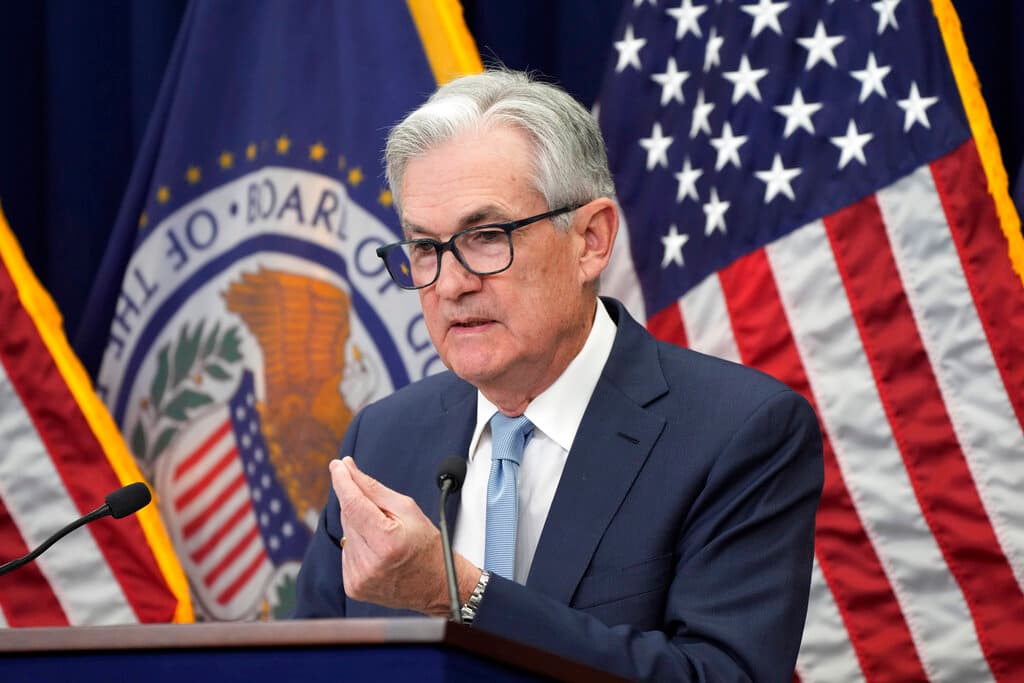Intriguing Possibility Emerges for Federal Reserve’s Annual Retreat Next Week — It’s Not Totally Confident of Its Own Model
It’s too soon to get the actual policy papers being discussed, but the possibility of a breakthrough beckons in the debate over inflation.

Central bankers and policymakers will, starting Thursday, be meeting with academics and economists at the Federal Reserve’s annual symposium in Jackson Hole. This year’s topic for discussion is not of the generic variety such as the “Challenges for Monetary Policy” theme from the 2019 conference. Nor will it serve up geopolitical scapegoat theories for monetary policy failures such as last year’s topic, “Structural Shifts in the Global Economy.”
No, this year’s theme is intriguing because it offers just a hint — though we won’t see the actual papers being discussed until they are presented — that Fed officials are not totally confident that the model and tools they use to conduct monetary policy are wholly reliable.
That would be a breakthrough, if admitted. The subject for the 2024 economic policy symposium is “Reassessing the Effectiveness and Transmission of Monetary Policy.” While an army of pundits are quick to decry any meshing of central bank issues with presidential politics, both the Democratic and Republican nominees would be smart to pay attention.
That’s because if President Trump and Vice President Harris are promising to reduce the cost of living for Americans weary of inflation — and they are, it’s at the core of both campaigns — then they must understand how Fed policymakers evaluate their own framework and mechanisms for making decisions and carrying them out.
At the start, there’s a fundamental disconnect between candidate claims about how they will lower inflation rates through their policies and what the Fed chairman, Jerome Powell, says about it. “Price stability is the responsibility of the Federal Reserve,” according to the mantra of Mr. Powell.
This suggests that it doesn’t matter what kind of economic agenda a president, or a Congress, might choose to implement. Whatever the impact on the money supply and prices, the Fed will handle it. Period.
So if Ms. Harris wants to tame inflation by increasing government intervention in the economy — by, say, going after “price gougers” through tribunals, all the while providing subsidies for health insurance and granting handouts for housing, further exacerbating deficit financing through government overspending — well, the Fed is prepared to passively accommodate such an agenda without passing judgment on its economic merits.
The only fly in the ointment is that, if inflation starts to move upward once again, Fed policymakers will have to go back to raising interest rates, because, based on their model, that is the required response to higher prices.
What about Trump’s economic plan? As a mission statement, it is straightforward and specific. “Together, we will deliver low taxes, low regulations, low energy costs, low interest rates and low inflation, so that everyone can afford groceries, a car and a home,” the Republican candidate stated on Wednesday at Asheville, North Carolina.
“Common sense,” he added.
Which brings us back to the central bankers’ parley later this week. The commonsense notion that a supply-side agenda as laid out by Trump would bolster incentives to work, save, and invest — resulting in greater production of goods and services, enhanced by increased productivity — indeed seems consistent with low interest rates and low inflation.
The best and most logical way to meet increased demand is by empowering the private sector to increase supply; price stability occurs when supply and demand come into balance. Even central bankers concede this point.
What they don’t accept is that monetary policy can do anything to increase supply. All they can do to fight inflation through monetary policy is to curtail demand — chiefly by imposing the obstacle of high borrowing costs to discourage the expansion of businesses and hiring of new workers.
At least, that is what the Fed’s current model presumes. You can’t have both low inflation and low interest rates; it’s an either-or situation. The Fed’s approach to managing inflation presumes its benchmark interest rate moves conversely with labor market conditions. It takes little note of the withdrawn dreams of those who aspired to grow their businesses.
That is why it matters so much that central bankers may be open to questioning the inviolability of their monetary policy framework. As they focus on reassessing its effectiveness and transmission, perhaps it will occur to Fed officials that raising the cost of capital imposes more damage on supply than demand — worsening, rather than improving, the inflation outlook. And that high interest rates on mortgages, car payments, and credit card debt increase the cost of living.
That is why it should matter to Trump and Ms. Harris. The Fed may claim responsibility for price stability — but voters will, as the Framers of the Constitution intended, hold elected leaders accountable.

